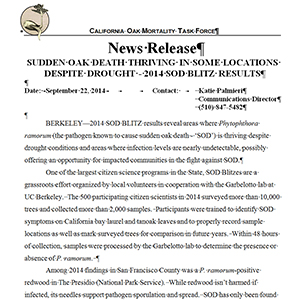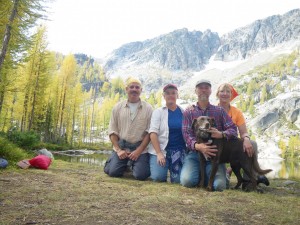I’m considering removal of bay with ramorum blight, but I have symptomatic and asymptomatic tanoak on my property. Will bay elimination protect my oaks and tanoaks?
Both bay laurels and tanoaks can spread SOD while most oaks are not infectious. Therefore, bay removal is typically aimed at protecting oaks. In the absence of bays, you may actually be able to facilitate survival of asymptomatic tanoaks, but only if their density is low (about 20 per acre). A possible plan of action may thus be to eliminate all medium-sized bay trees (up to 20 inch DBH) that are not in a riparian setting and to eliminate all infected tanoaks. You may then decide to leave a few well-spaced tanoaks (50 feet minimum from one another), ensuring none of them are within 30 feet of an oak.








